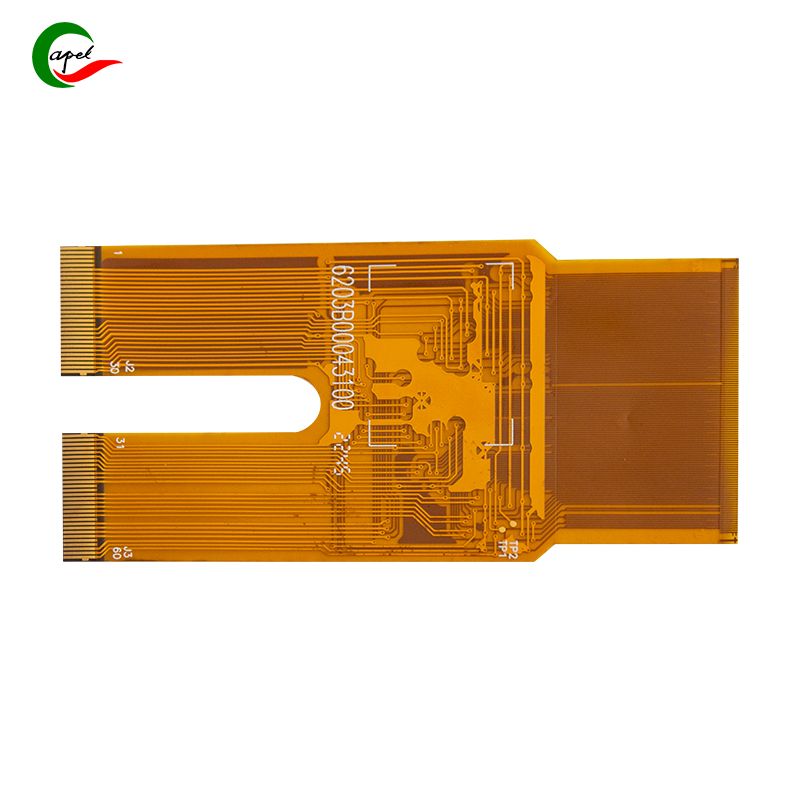In a world where devices are getting smaller, more flexible, and more powerful—think foldable phones, medical wearables, and automotive sensors—flexible PCBs (FPCs) are the unsung heroes holding everything together. But not all FPCs are created equal. A low-quality flexible circuit can derail your project with failures, signal issues, or premature breakdowns. So, how do you separate the best from the rest? Here’s a guide to choosing high-quality FPCs that deliver reliability, performance, and longevity.
High-quality FPCs begin with superior materials. Cutting corners here leads to disasters down the line—so inspect these components closely:
The substrate is the "backbone" of an FPC, and polyimide (PI) is the gold standard for high performance. Here’s why:
- Temperature resistance: PI handles extreme heat (-269°C to 260°C), making it ideal for devices exposed to soldering, engine bays, or industrial environments.
- Flexibility and durability: It resists cracking even after 100,000+ bends—critical for foldable screens or robotic joints.
- Electrical stability: PI has a low, stable dielectric constant (3.0–3.5), ensuring minimal signal loss in high-frequency circuits (like 5G modules).
Red flag: Avoid FPCs using polyester (PET) unless your application is low-stress (e.g., toys). PET melts above 120°C and degrades quickly under repeated bending.
The copper layer carries signals, so its quality directly impacts conductivity and flexibility:
- Rolled copper foil (RA copper): Made by pressing copper into thin sheets, it has a uniform, dense grain structure. This makes it 3–5 times more ductile than electrolytic copper, surviving 100,000+ bends without cracking. Use it for dynamic applications (e.g., foldable phones, wearable fitness trackers).
- Electrolytic copper foil (ED copper): Cheaper but with a more brittle, tree-like crystal structure. It works for static or low-bend uses (e.g., camera flex cables) but will fail quickly in high-flex scenarios.
Check thickness: Copper foil comes in 9μm, 12μm, 18μm, or 35μm. Thinner foil (9–12μm) improves flexibility; thicker (35μm) handles higher currents (e.g., power management circuits). Ensure the thickness matches your design specs—no substitutions.
Many FPCs use adhesives to bond copper to the substrate, but adhesiveless designs are better for high quality:
- Adhesiveless FPCs bond copper directly to PI (via sputtering or lamination), eliminating weak points. They resist heat better (no glue to melt) and reduce signal loss.
If adhesives are used (common in mid-range FPCs), ensure they’re high-temperature epoxy with a glass transition temperature (Tg) ≥ 150°C. Low-Tg adhesives soften under heat, causing delamination (layers peeling apart).

Even top materials fail if manufacturing is sloppy. Look for these 工艺 (process) hallmarks:
- Line width/space (L/S) tolerance: High-quality FPCs maintain L/S within ±10% of design. For example, a 0.1mm trace should measure 0.09–0.11mm. Loose tolerances cause short circuits or signal delays.
- Edge smoothness: Traces should have sharp, burr-free edges (check under a microscope). Ragged edges create impedance issues, critical in high-speed signals (e.g., Ethernet or radar).
The coverlay (a thin PI film) and solder mask protect traces from moisture, dust, and abrasion:
- No bubbles or misalignment: Coverlays must bond perfectly to the substrate—bubbles trap moisture, leading to corrosion. Misaligned coverlays expose traces to damage.
- Precise openings: Holes for solder pads or connectors should be accurate to ±0.05mm. Off-center openings make soldering impossible or cause weak joints.
The copper surface needs protection from oxidation. Choose the right finish for your application:
- ENIG (Electroless Nickel Immersion Gold): A thin gold layer (0.1–0.5μm) over nickel. It’s corrosion-resistant and ideal for high-reliability uses (automotive, aerospace) or connectors that see frequent plugging.
- OSP (Organic Solderability Preservative): A thin organic film that burns off during soldering. Cost-effective for consumer electronics (e.g., smartphones) but less durable than ENIG.
- Tin plating: Affordable but prone to oxidation. Use only for low-stress, short-lifespan devices.
A high-quality FPC should survive real-world abuse. Ask suppliers for test data on these key metrics:
Don’t hesitate to grill suppliers. High-quality manufacturers will share:
- Material certificates (PI grade, copper type, adhesive specs).
- Process controls (e.g., laser drilling accuracy, etching tolerances).
- Failure rates from past batches.
- Customization capabilities (e.g., odd shapes, high-frequency optimization).
Choosing a cheap FPC might save money upfront, but it’ll cost you in returns, downtime, or reputation damage. High-quality FPCs—made with PI substrates, rolled copper, precise manufacturing, and proven reliability—are an investment in your product’s success.
Whether you’re building a life-saving medical device or the next foldable tech sensation, the right FPC isn’t just a component. It’s the difference between a product that fails and one that thrives.
Founded in 2009, our company has deep roots in the production of various circuit boards. We are dedicated to laying a solid electronic foundation and providing key support for the development of diverse industries.
Whether you are engaged in electronic manufacturing, smart device R&D, or any other field with circuit board needs, feel free to reach out to us via email at sales06@kbefpc.com. We look forward to addressing your inquiries, customizing solutions, and sincerely invite partners from all sectors to consult and collaborate, exploring new possibilities in the industry together.
